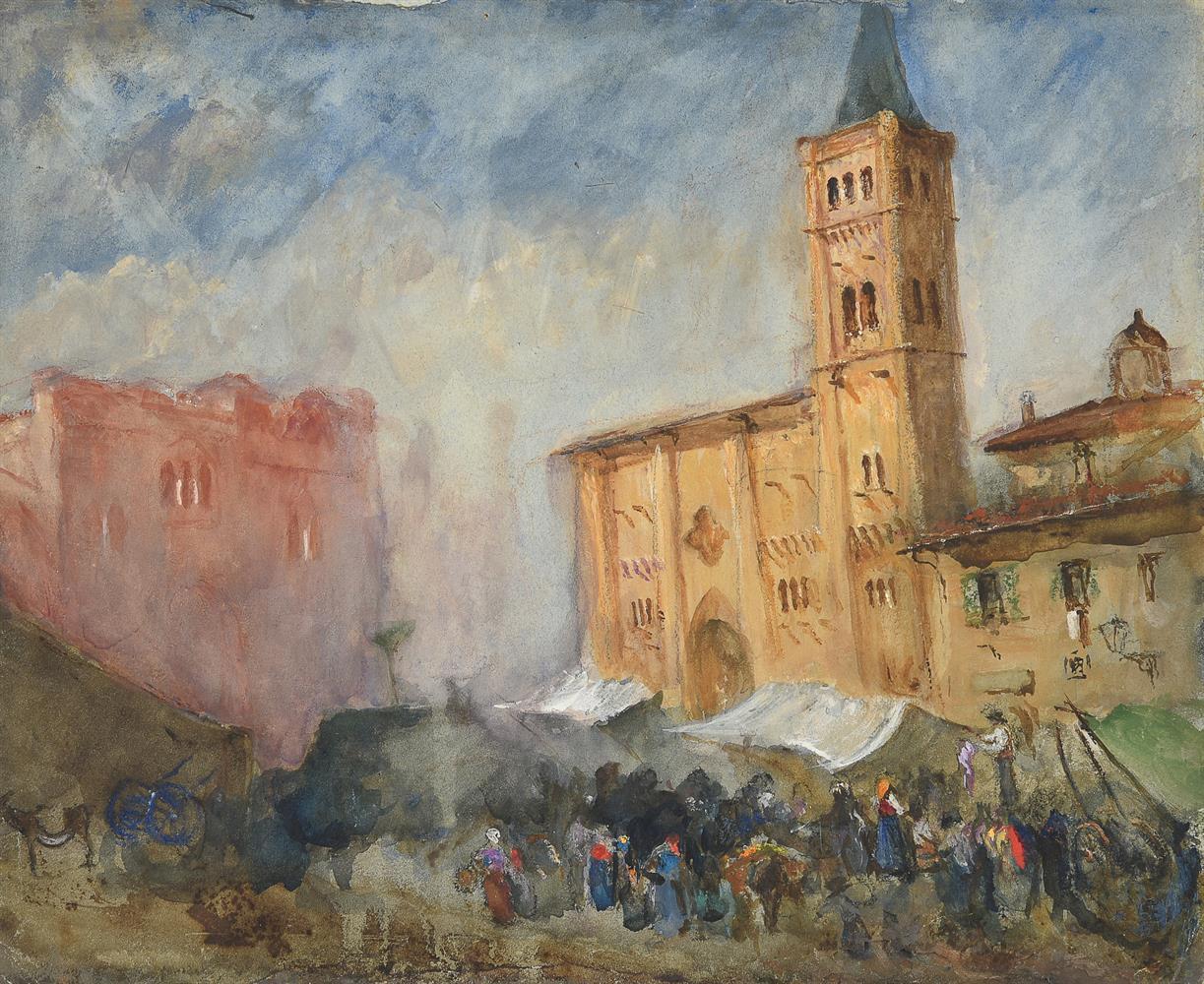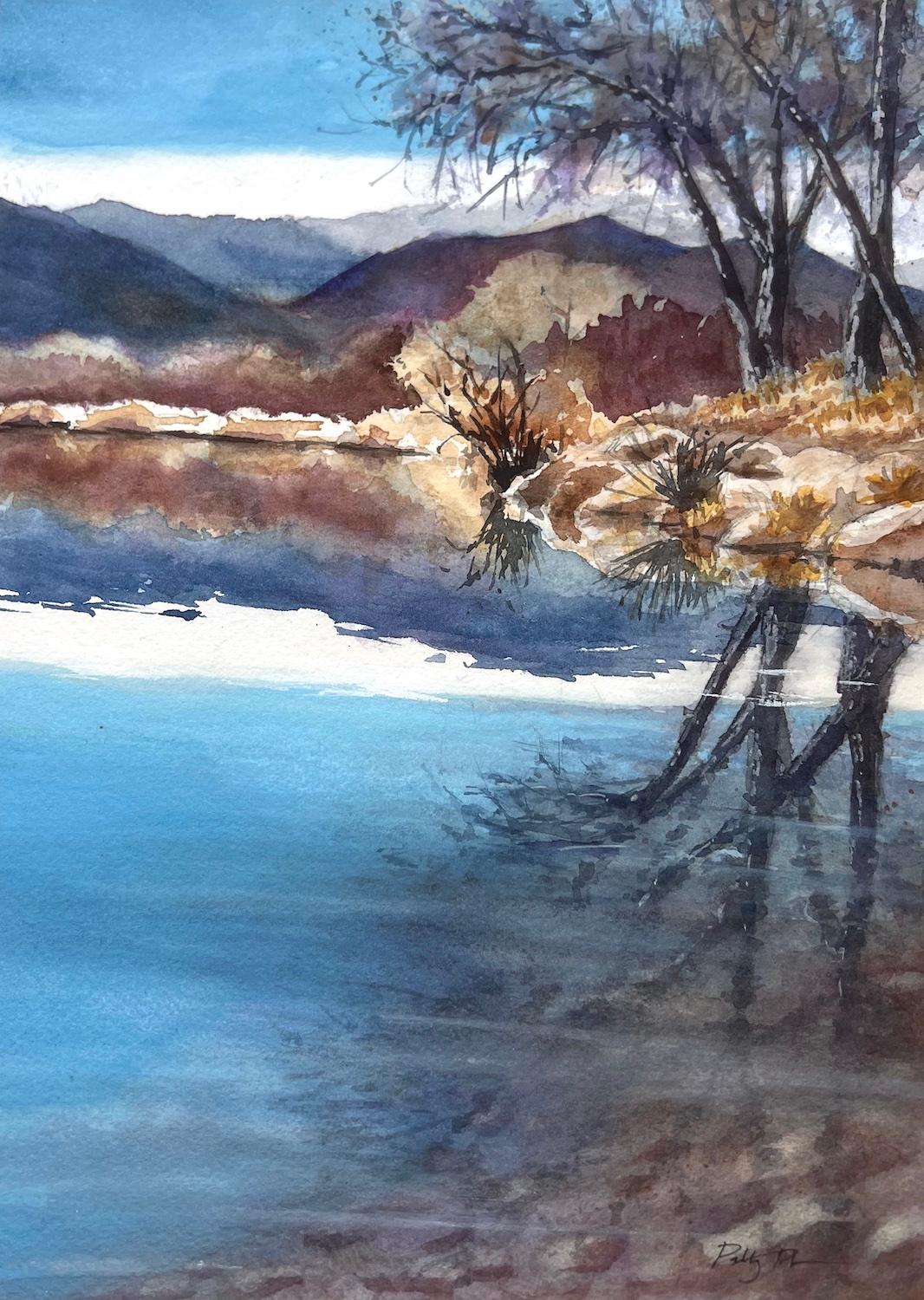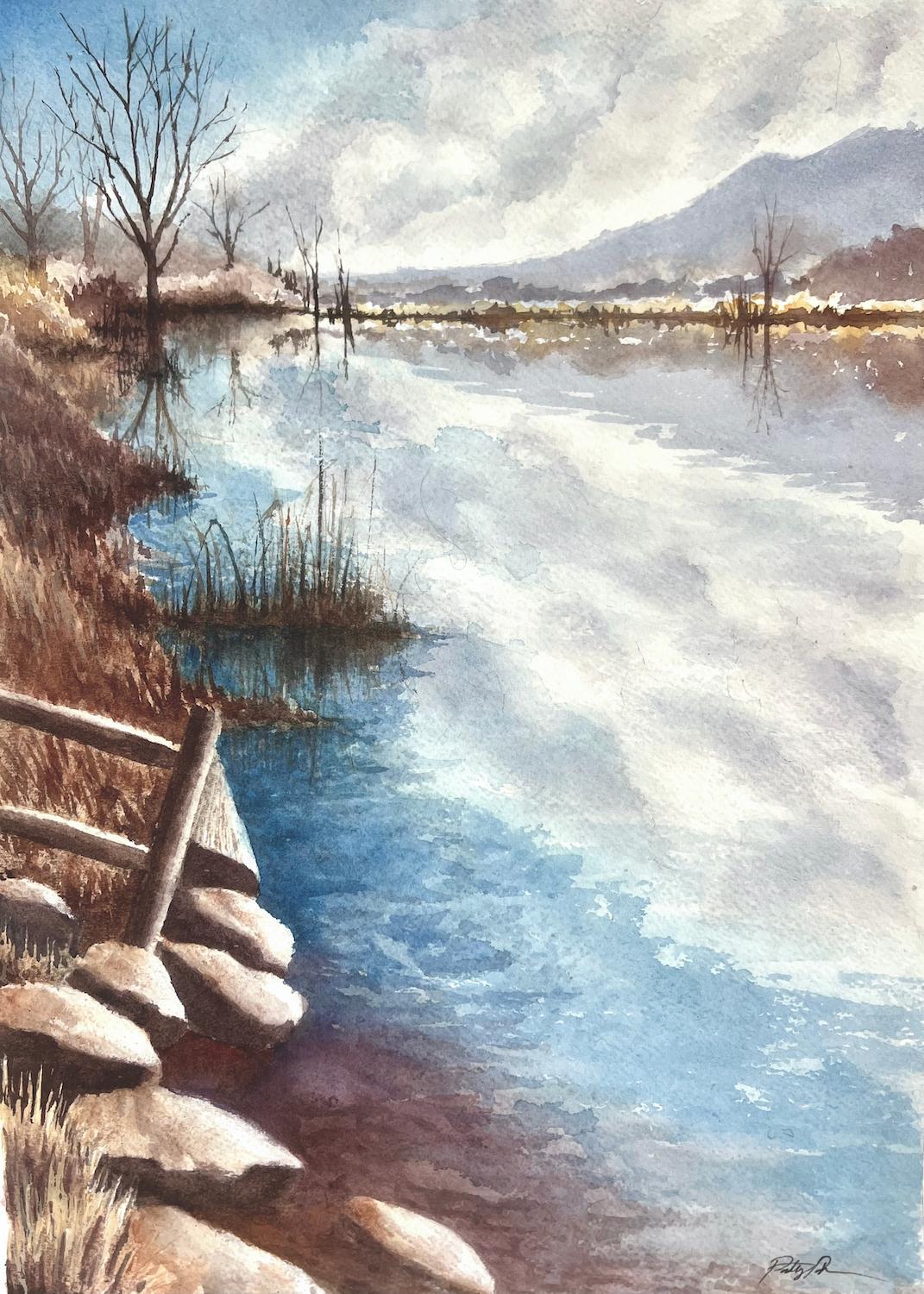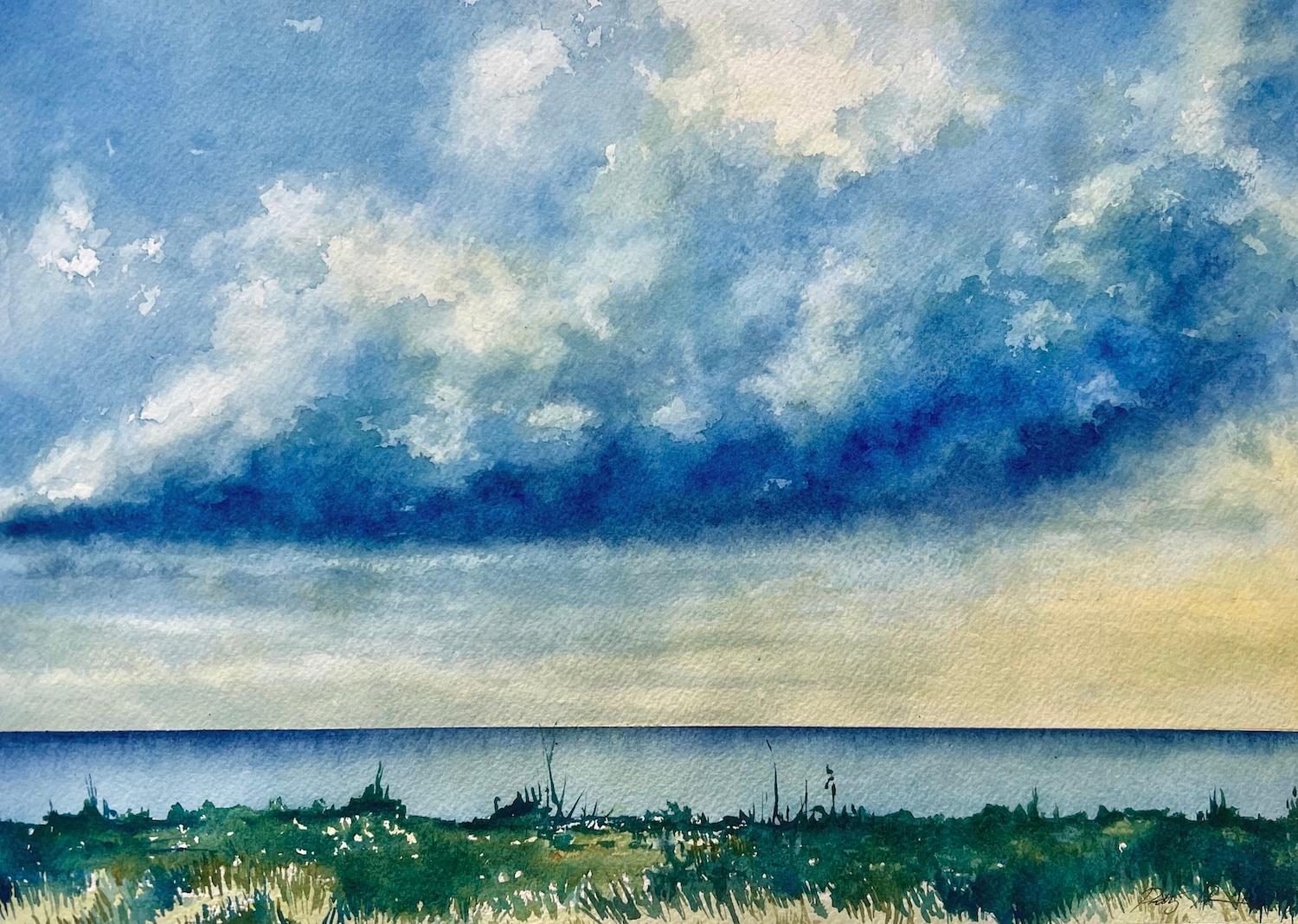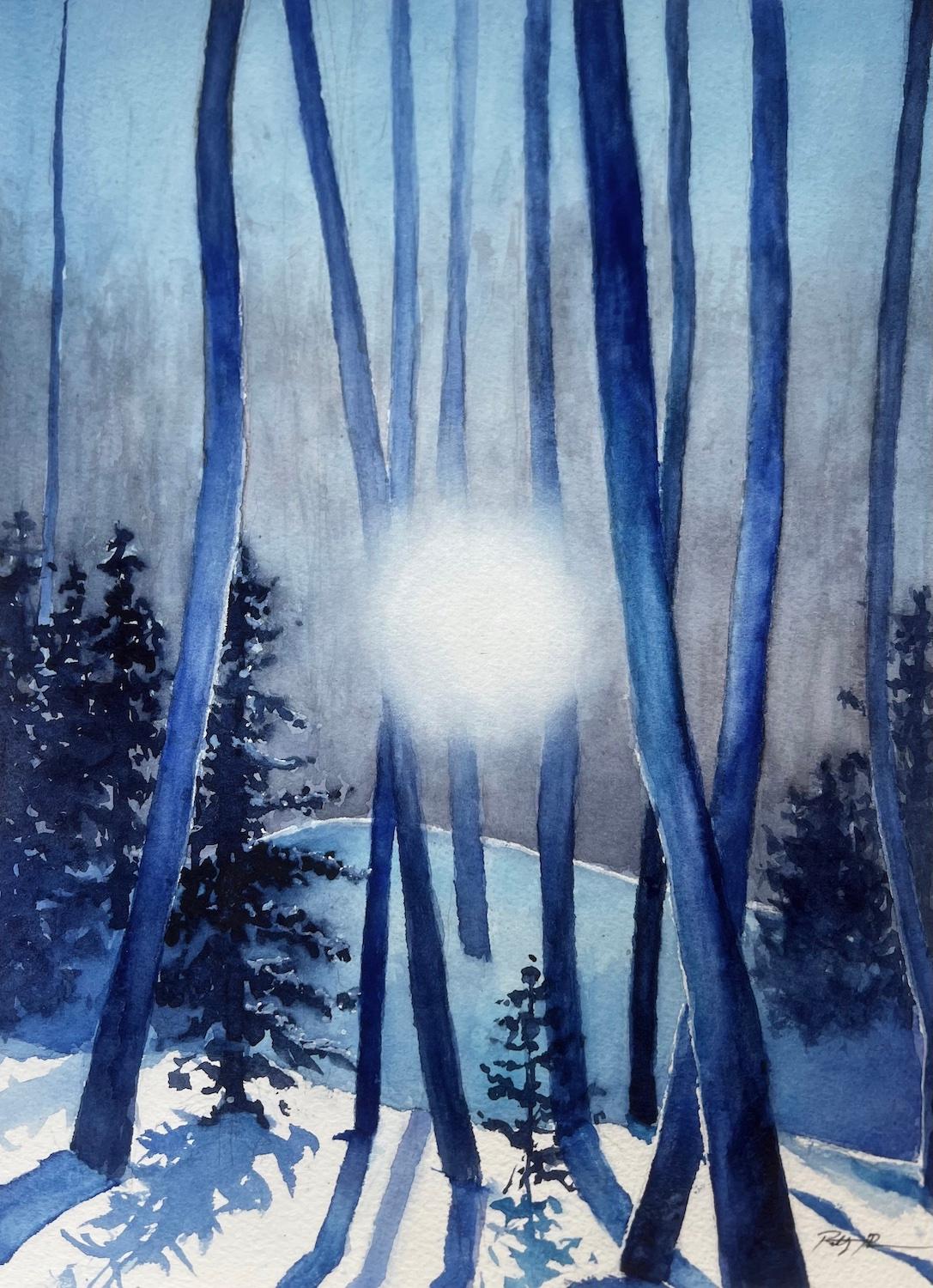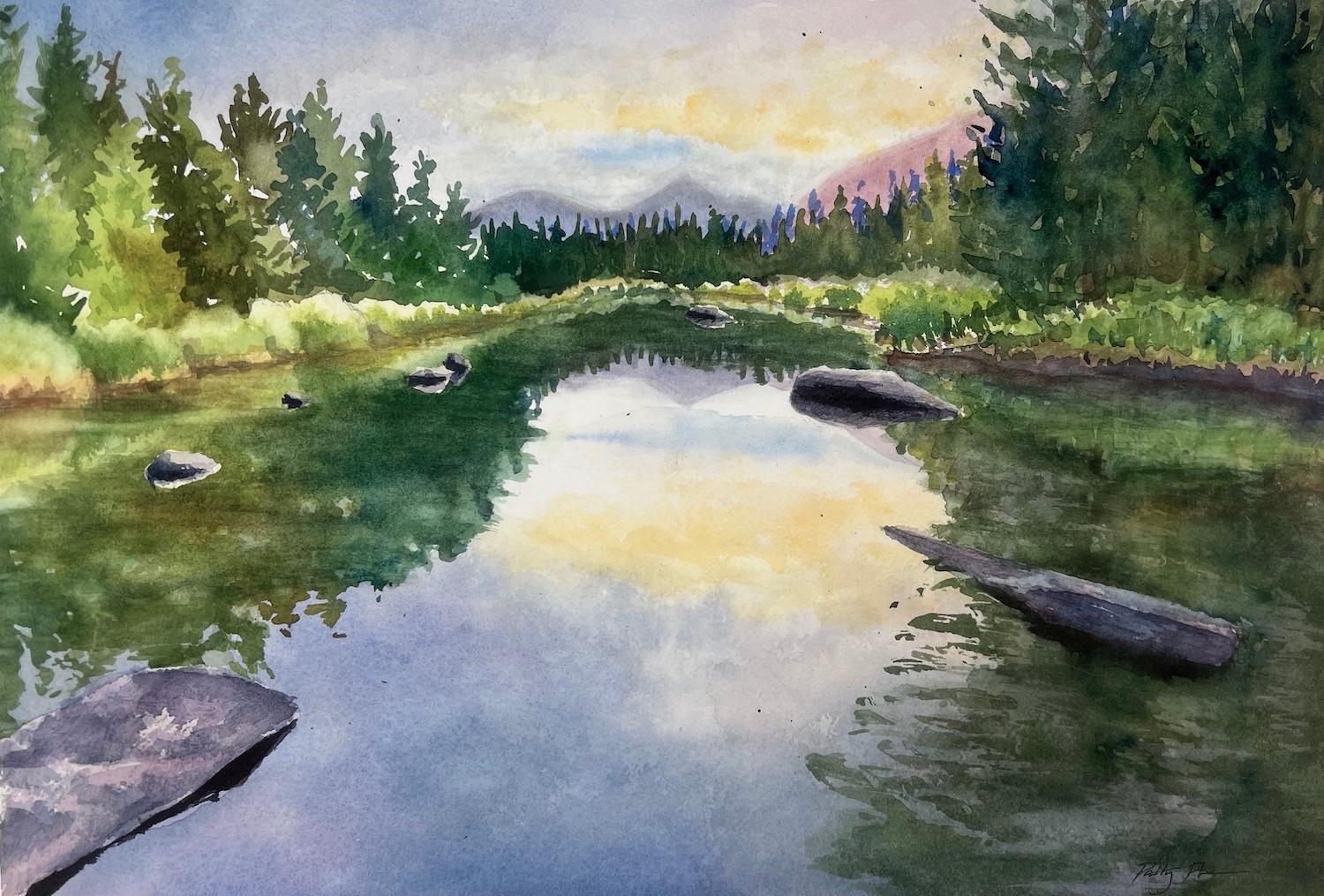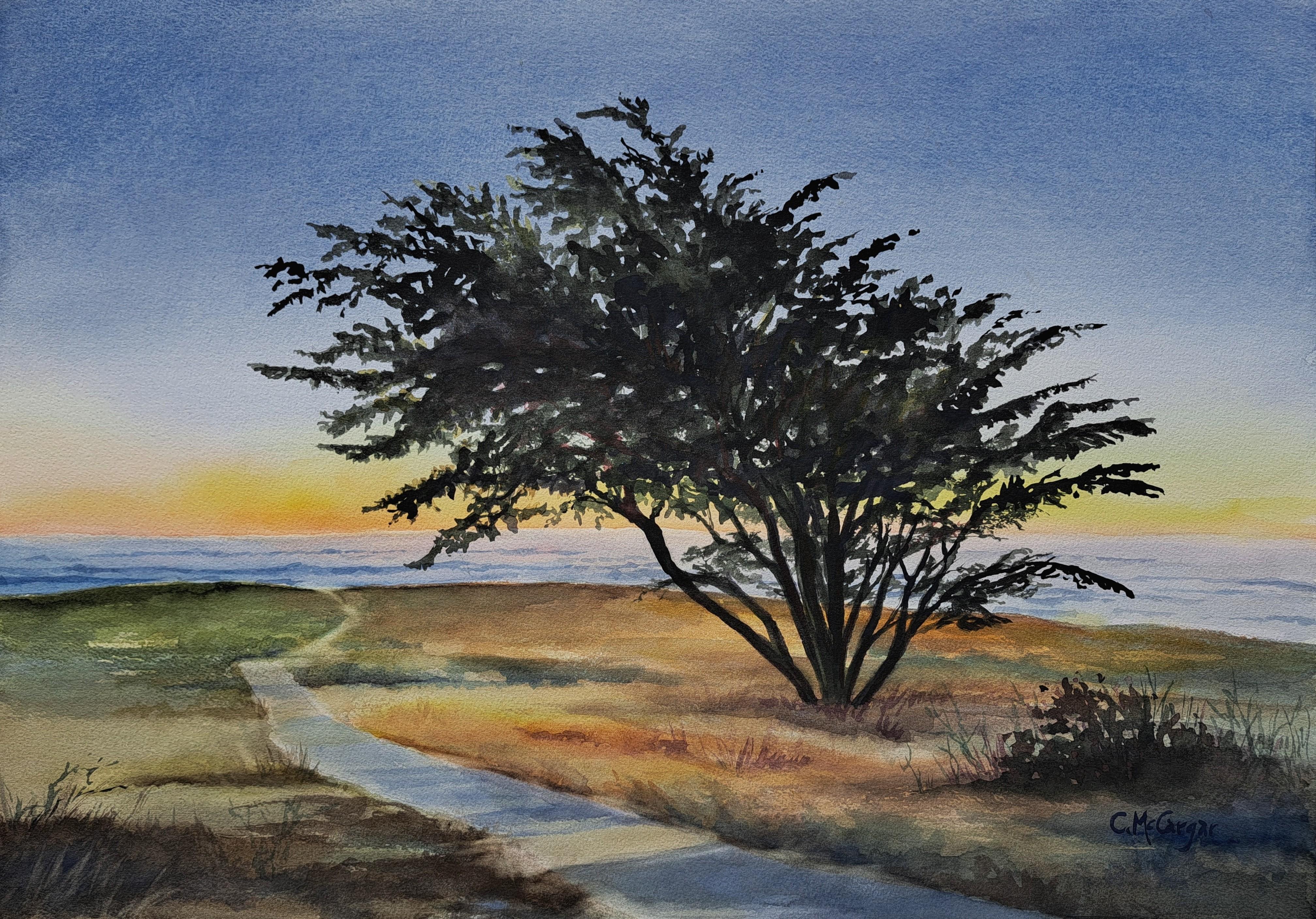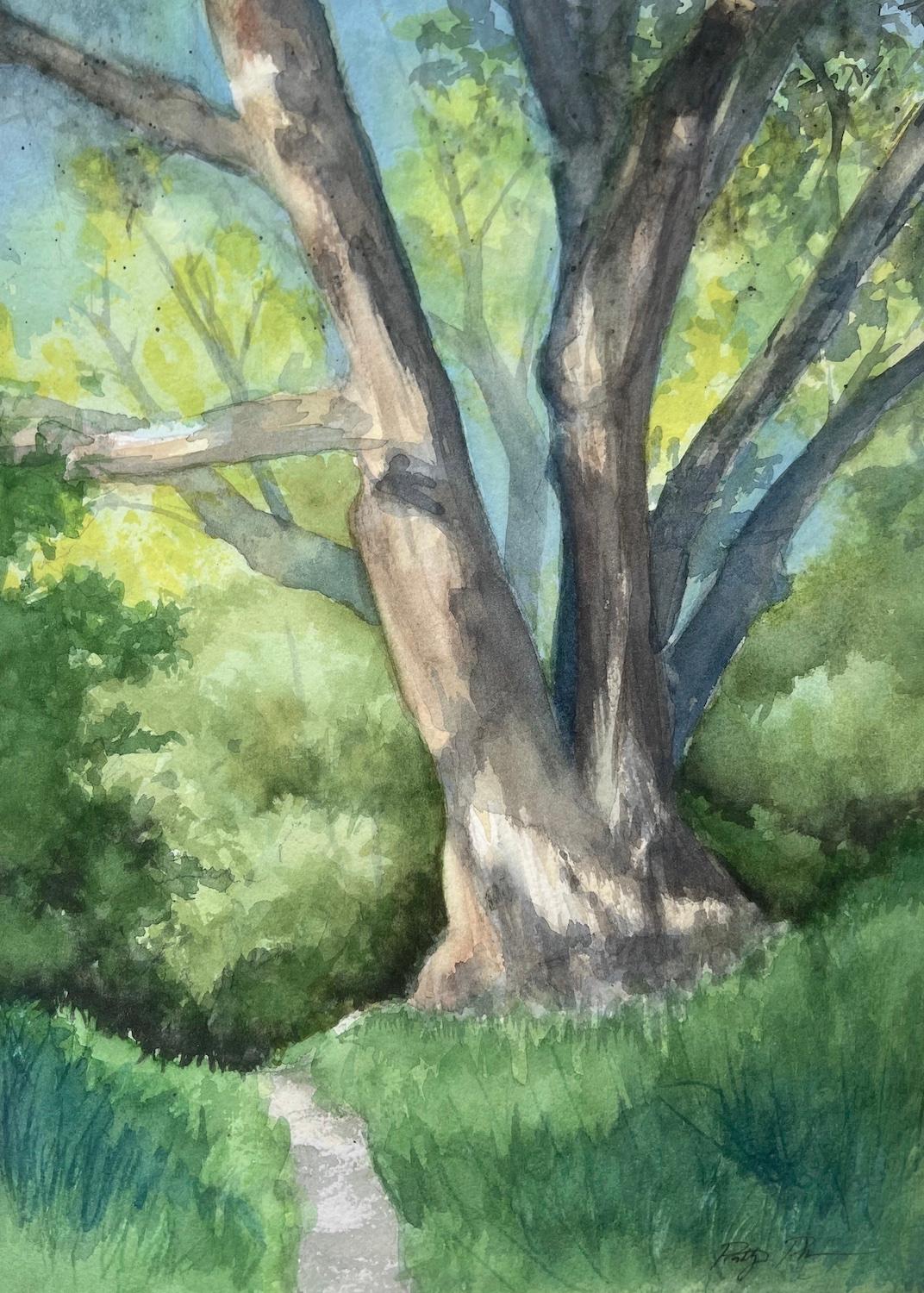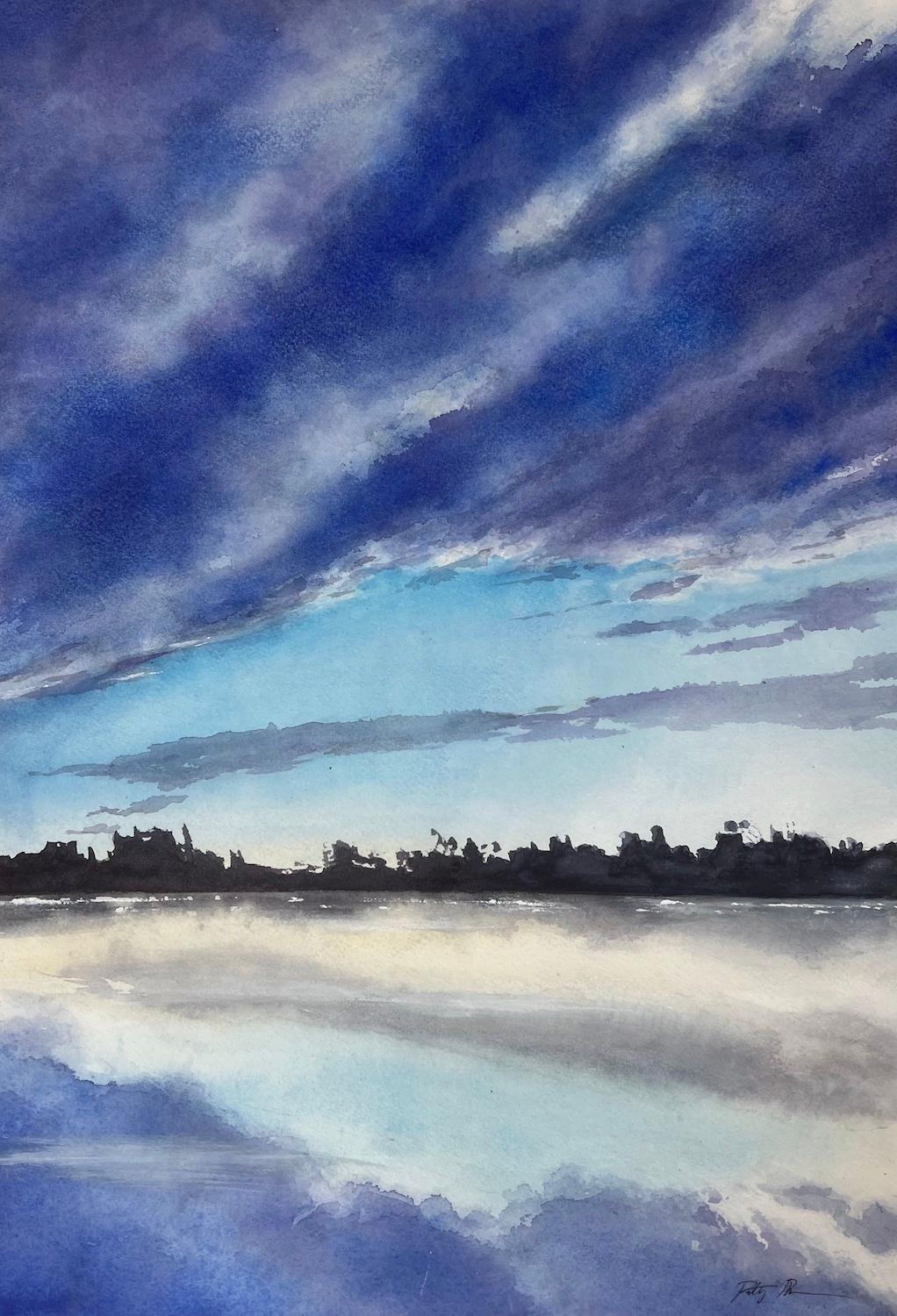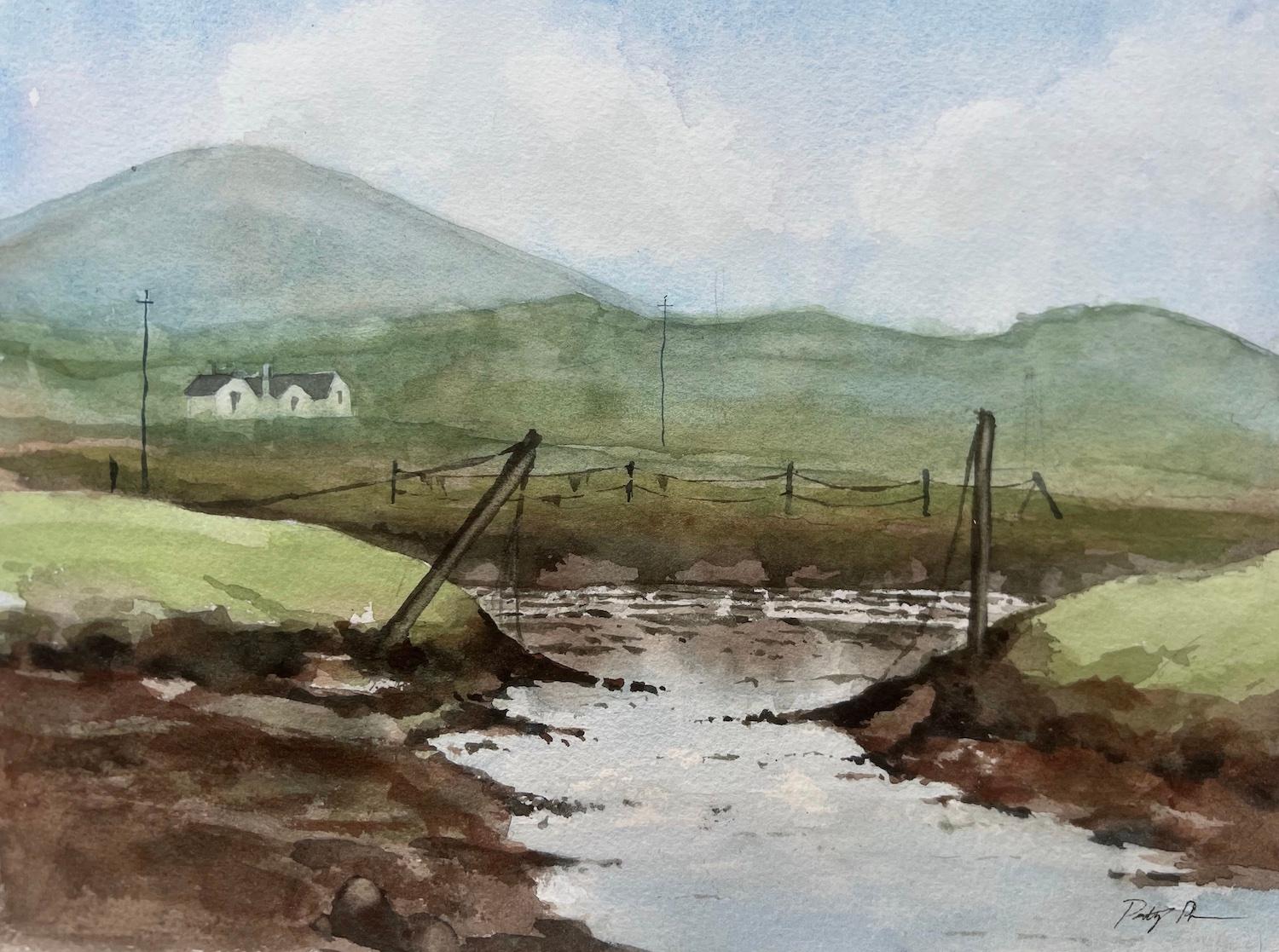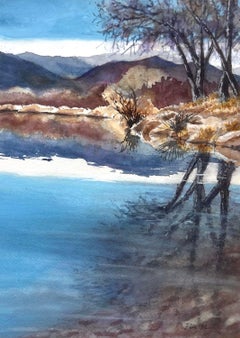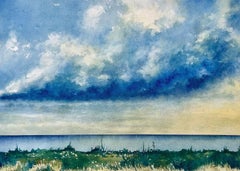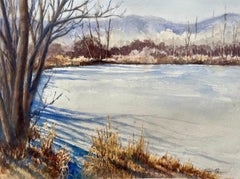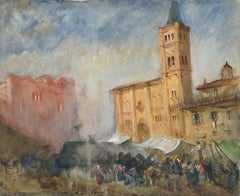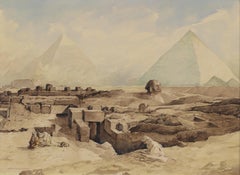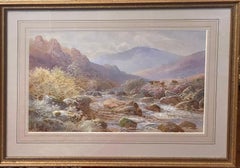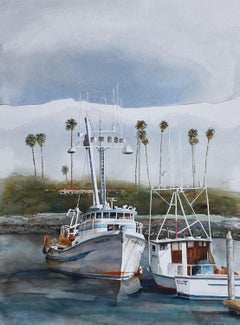
Trifecta, Original Painting
View Similar Items
Thomas HoerberTrifecta, Original Painting2024
2024
About the Item
Artist Comments
Drawn to the repeating horizontal lines of the distant trees, rock wall, and water, artist Thomas Hoerber captures the scene with watercolor. Two boats rest peacefully by a dock along the Channel Islands in Ventura County, California. The sunlight provides a contrast between the whites of the vessels and the colors of the sea.
About the Artist
Artist Thomas Hoerber brings his lifelong experience as a make-up artist to his watercolor paintings. "I am drawn to the historical and the weathered because I find beauty in their character," says Thomas. Following his retirement from a 45-year career in the TV and film industry, he finds endless inspiration on the rugged California coast. His focus on painting different kinds of boats is inspired by all the time he spent fishing with his grandfather. Additionally, his motivation to capture coastal scenes stems from day trips to waterside cities and memories of deep-sea fishing, motorcycle riding, and exploring hidden corners of the region. He paints in a well-lit corner of his living room, adjacent to his backyard garden, where he occasionally takes a quick break. When not painting, Thomas enjoys watching baseball, reading, and walking on nearby beaches.
Words that describe this painting: harbor, marina, fishing, boats, Ventura, California, sunlight, Channel Islands, water, paper, sky, peaceful, impressionism, seascape, watercolor painting, grey
Trifecta
Thomas Hoerber
Watercolor painting on paper
Ready to frame
One-of-a-kind
Signed on front
2024
19.5 in. h x 14.25 in. w
0 lbs. 1 oz.
- Creator:Thomas Hoerber
- Creation Year:2024
- Dimensions:Height: 19.5 in (49.53 cm)Width: 14.25 in (36.2 cm)Depth: 0.1 in (2.54 mm)
- Medium:
- Movement & Style:
- Period:
- Condition:Trifecta. Thomas Hoerber. Watercolor painting on paper. Ready to frame. One-of-a-kind. Signed on front.
- Gallery Location:San Francisco, CA
- Reference Number:Seller: 776761stDibs: LU922114378852
More From This Seller
View AllArtist Comments
A still lake reflects the trees, rocks, and surrounding mountains. The lakebed shows through the clear water, adding depth to the scene. The blend of golds and ...
21st Century and Contemporary Impressionist More Art
Watercolor
Artist Comments
Golds, reds, and plums capture the brilliance of fall at Coot Lake in Colorado. The water mirrors its surroundings, reflecting billowing clouds and distant moun...
21st Century and Contemporary Impressionist More Art
Watercolor
Artist Comments
A serene view of the Pacific Ocean unfolds from Highway 1 along the California coastline. Layers of wet-on-wet brushwork capture the drifting cloud patterns and...
21st Century and Contemporary Impressionist More Art
Watercolor
Artist Comments
The sky shines a brilliant blue on these rare warm January days. Sunlight bathes the landscape, casting shadows from the trees. Patches of golden grass peek thr...
21st Century and Contemporary Impressionist More Art
Watercolor
Artist Comments
The low winter sun shines through an aspen grove. Snow blankets the ground, turning the world into a quiet expanse of blue and white. Each step crunches beneath...
21st Century and Contemporary Impressionist More Art
Watercolor
Artist Comments
The first morning light stretches across the lake at Wind River, Wyoming. As the sky brightens, the woods remain shadowed, and the world slowly wakes. A crisp c...
21st Century and Contemporary Impressionist More Art
Watercolor
You May Also Like
19th Century Impressionist Landscape Drawings and Watercolors
Watercolor
1980s Impressionist Landscape Drawings and Watercolors
Watercolor
Early 20th Century Impressionist Landscape Drawings and Watercolors
Paper, Ink, Watercolor, Pencil
19th Century Impressionist Landscape Drawings and Watercolors
Watercolor
19th Century Impressionist Landscape Drawings and Watercolors
Watercolor, Board, Pencil
Early 1900s American Impressionist Landscape Drawings and Watercolors
Paper, Watercolor, Cardboard
